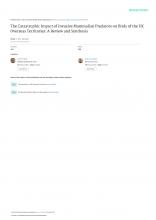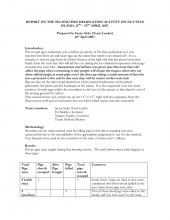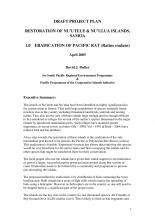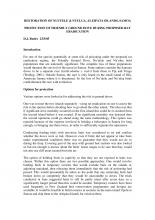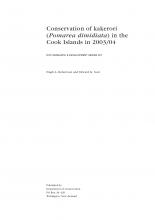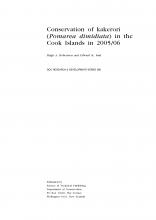Conservation of kakerori (Pomarea dimidiata) in the Cook Islands in 2003/04

BRB
Available Online
Robertson Hugh A
,
Saul, Edward K
2005
In 1989, the kakerori (Pomarea dimidiata) was one of the 10 rarest bird species in the world, with a declining population of just 29 birds. During each breeding season since then, rats have been poisoned within the 155 ha of forested hill country they occupy in the Takitumu Conservation Area in southeastern Rarotonga. As a result, the kakerori population has rebounded, with a minimum of 292 birds found on Rarotonga in August 2003. In 2001/02, the emphasis of management shifted from the .recovery. of kakerori to a programme aimed at .sustaining. the population at 250.300 individuals. The major changes were an experimental reduction in rat poisoning effort to a level where recruitment of kakerori balances annual mortality, and a series of transfers to establish an insurance population on the island of Atiu. In 2003/04, all bait stations were filled fortnightly, rather than the previous mix of weekly and fortnightly refills. This reduced labour costs by 30% to 32 person days, and used a total of 39 kg of Talon® (active ingredient brodifacoum), which was only 13% of the maximum annual poison use over the same area during the .recovery. phase of the programme. Breeding success was high (0.91 fledglings/ breeding territory), even in the unpoisoned areas, and a record total of 80 fledglings was detected. The fortnightly poisoning regime offers promise as an effective, cheaper and less toxin-intensive method than that used previously, and so we recommend maintaining this regime in 2004/05, so that the longerterm effects can be assessed. A third and final batch of 10 young kakerori was transferred to Atiu Island in August 2003. This .insurance. population is becoming well established; the five breeding pairs monitored in 2003/04 each raised two fledglings, and a minimum of 15 birds was found in May.June 2004 in the small part of the island that was searched.
